What makes Hillary Clinton tick?
This post was originally created during the time of the 2016 U.S. Presidential Election. As the 2020 U.S. Presidential Election heats up, people again are questioning the candidates’ temperaments to be Commander In Chief. Because Hillary Clinton remains a high-profile figure, she is a good case study in personality.
No one kind of temperament is inherently superior to any other, however. Any kind of temperament can lend itself to high public office. The better question is which candidate has the most integrated temperament — the one most internally balanced and healthy — regardless of what kind of temperament it is.
The Enneagram is a highly effective personality typing system. There are nine personality styles. Click here to learn more about the Enneagram generally, and the Living Enneagram approach in particular.
Hillary Clinton runs the Type 1 – the “Perfectionist Reformer.”
This post is part of a series:
It may be help to read the first post by way of background. The others posts stand alone.

Type 1 – The Perfectionist Reformer
Type 1 constrains and controls anger energy. Impulses are regarded as chaotic, unruly, destabilizing forces that must be civilized. Left unchecked, one’s natural impulses might lead to anarchic fracturing and devastation.
1s use the vitality of anger energy against itself — in an anger against anger — to suppress, control, and pacify what 1s regard as potentially destructive urges. This gives 1s incredible poise under pressure and the determination to strive for a better future for everyone; but it can also lead to unbearable inflexibility, withering criticism, and the steady heat of anger leakages.
The 1 focus of attention is error, dividing the world into right versus wrong. 1s naturally spot even the smallest misalignment or flaw in work, people, and environments. When Hillary Clinton was accused of misconduct in the 1994 Whitewater scandal, Bill Clinton came to her defense, telling The New York Times:
I believe I’m a better authority than anybody else in America on my own wife. I have never known a person with a stronger sense of right and wrong in my life — ever.
1s adjudicate right and wrong using their own internal standards of proper conduct. The gut of the 1 is a natural energetic calibrator, precisely detecting deviations, which 1s address using the corrective force of their (ideally tamed) anger energy. 1s also can over-function, creating an obsession about being “right.”
Some 1s focus much of their anger energy internally, using a high octane Inner Critic to improve themselves. Other 1s (or at other times, 1s) turn anger energy outward more in an effort to reform the world, with special attention to improving their loved ones. Still other 1s, present themselves as an exemplar of perfection and then take it upon themselves to teach everyone else.
At higher levels of integration, 1s are humane, life-affirming, reasonable, objective principled reformers who plant seeds and thanklessly toil for a better future they may never see. When average functioning, 1s strive for peace by reproaching, criticizing, correcting, and compulsive organizing. They sometimes feel the only way to achieve peace is through total restriction and contraction. When very low functioning, 1s can descend into bitter, self-righteous, hypocritical, misanthropes — punishing self and others.
When integrated, 1s are the paragon of integrity. They provide a powerful example, inspiring others to live into the best in themselves for the sake of the world. 1s recover the sensitivity, empathy, and authenticity of Type 4 and shine into the relaxed, free-spirited, curious, visionary optimism of Type 7. Famous 1s include: Eleanor Roosevelt, Mahatma Gandhi, Margaret Thatcher, and John McCain.
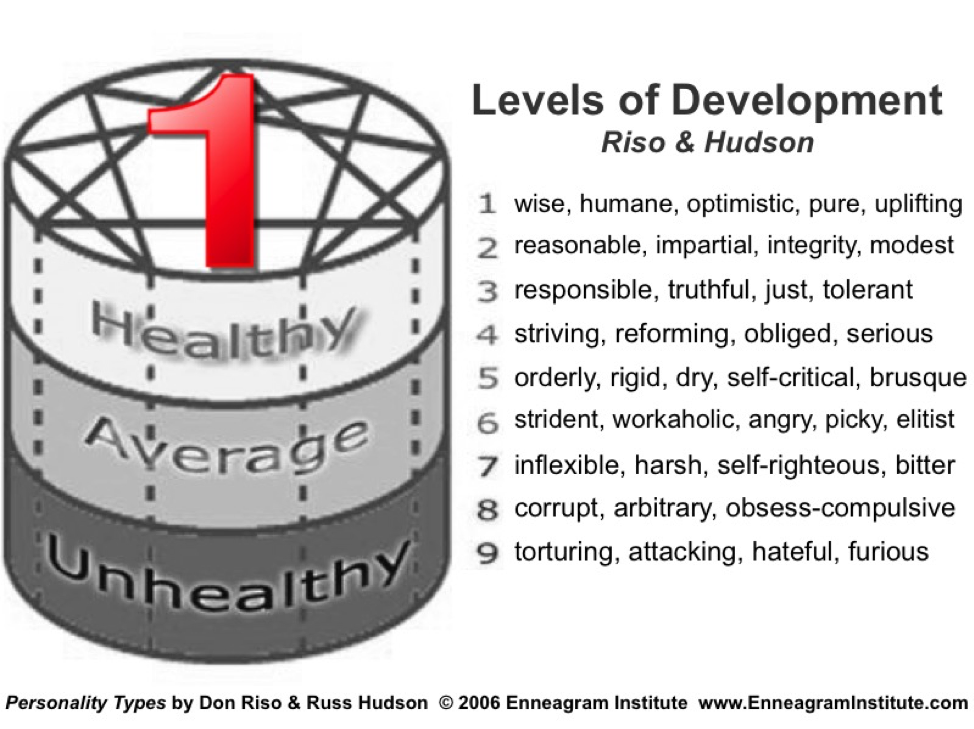
Type 1 Patterns & Hillary Clinton
Type 1s can struggle with perfectionism and hypocrisy. Whereas 8s assert their existence by making an intense impact, and 9s erase their existence to keep things easy-going and unified, 1s justify their existence by being virtuous, responsible, and serious. It is as if 1s are saying, “I deserve to live because I try so hard to be good.”
Thus 1s can be unrelenting in their efforts to be virtuous and avoid backsliding or falling into corruption. 1s tend to be purposeful, precise, and punctual. Life is an ongoing self-improvement project in which 1s work exhaustively to better themselves and others. Bill Clinton credits Hillary for making him a better man:
Now you know, Hillary is on a constant self-improvement project. You know, she’s always trying to improve me, so I’m having to get used to being improved more regularly. She’s just on me all the time to sort of tone up my exercise program or do this or do that…. But we… still have a lot of fun together.
1s can get hyper-critical and judgmental in pursuit of an ideal of perfection. When haunted by the guilt of not living up to their own high standards, they can double down on pointing out problems. When doing so, 1s miss seeing that the activity of judging is itself the cause of their persistent dissatisfaction, their forgotten feeling of wholeness, rather than the solution. And 1s can turn this same dynamic outward onto others.
In a 2005 New York Times Magazine article, “Ms. Triangulation,” Matt Bai cites two early philosophical influences — Methodism and Goldwater Republicanism — shaping Clinton’s outlook: “The first is an unshakable notion of right and wrong and an almost missionary zeal for imposing it on others, mainly through political action. The second is a strand of moral conservatism that borders on prudishness.” Bai writes:
In 1993, in the pages of this magazine, Michael Kelly wrote what became a famous article about Hillary Clinton. The acid portrait, titled “Saint Hillary” and based largely on Clinton’s own words, described a preachy first lady who believed, with astonishing self-certainty, that she could reform American politics by inflicting her own moral code on everyone else.
The compulsion to perfection, and attendant reformation of self, others, and society, has a flip side: hypocrisy. As Reinhold Niebuhr remarked, “hypocrisy [is] an inevitable by product of all virtuous endeavor.” The more 1s pressure themselves to be perfect, the more they consciously or unconsciously act out. So-called “Trapdoor Ones” create escape hatches, secret spaces, in which they behave in ways exactly opposite of their standards. Such is the preachy parson with a penchant for prostitution.
Type 1 hypocrisy can extend to truth-telling. Generally, 1s tend to be scrupulously honest, more so than other ennea-types. Yet, it can be terrifying for a 1 to feel condemned. In the face of criticism of their ideals or behavior, reactive 1s amp up their self-justification in strained, even bizarre, moral rationalizations and ‘ends justify the means’ calculations . . . to the point of blatant dishonesty. Such reasoning often involves disregarding one’s high standards — “they need not apply to me in this instance” — in order to realize or uphold them elsewhere — “think of all the good that will result later.”
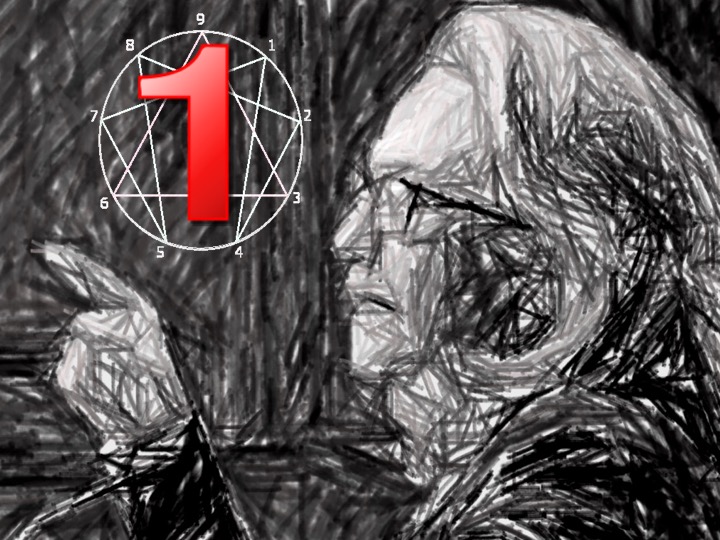
In July 2016, CNN interviewed Carl Bernstein about his book, A Woman in Charge: The Life of Hillary Rodham Clinton. Bernstein said George Stephanopoulos, during his time as White House press secretary in the Clinton Administration, privately referred to Hillary Clinton’s “pattern of “Jesuitical lying.” When asked about the “three pillars” of Clinton’s life, Bernstein responded:
Big surprise. Family, religion, and public service. And those commitments are real. There is nothing fake about them. . . . But on the next to last page of the book, I noted that, “Since her Arkansas years, Hillary Rodham Clinton has had a difficult relationship with the truth . . . Through one crisis after another in a life creased by personal difficulties and public and private battles … a fierce desire for privacy and secrecy seems to cast a larger and larger shadow over who she is.”
Clinton’s Four Pinocchios
Most, if not all, of the “scandals” around Hillary Clinton turned out to be much ado about, if not nothing, then not very much. In July 2016, The Atlantic issued a “Clinton Scandal Primer” concluding, “Even though many of the controversies have involved far more smoke than fire—and sometimes no fire at all—the damage is real.” Allies and sympathetic foes argue gender dynamics drive Clinton being held to a higher standard and higher level of scrutiny than her male counter-parts. While acknowledging the influence of gender stereotypes, it’s also true Clinton’s struggle with truthfulness is consistent with running Type 1 patterns under stress.
Whatever merit — or lack of merit — there is in the email server “scandal,” Clinton continues to be less than forthright. The Washington Post assigned Clinton its strongest rating of Four Pinocchios (reserved for ‘Whoppers’) with respect to her July 2016 statements on the subject. Fact-checker Glenn Kessler concluded:
Clinton is cherry-picking statements by Comey to preserve her narrative about the unusual setup of a private email server. This allows her to skate past the more disturbing findings of the FBI investigation
As we have seen repeatedly in Clinton’s explanations of the email controversy, she relies on excessively technical and legalistic answers to explain her actions.
This lead The Atlantic’s Ron Fournier, fretting about a Trump presidency, to issue a “desperate plea” to Clinton Democrats: “Please, for the sake of the country, tell her: Stop lying.”
Yet, a Type 1 dynamic should not be overlooked: Clinton probably already puts immense pressure on herself. Guilt and shame might move other ennea-types to be better; but it is precisely the pressure on the Type One to be perfect that increases their dubious moral navigation when needing showing others they are perfect. It is the mounting weight of responsibility (and what could be weightier than the fate of the republic?) that presses 1, consciously or unconsciously, into taught knots of tangled moral casuistry.
Then again, the Oval Office is an Olympic-level weight room of responsibility. Rather than pile on pressure, however, it’s more helpful for 1s to find ways to relieve themselves of the albatross of perfection. We can all help our beloved 1s — and supporters can help Clinton — by encouraging forgiveness, patience, and acceptance.
It’s worth remembering a 1’s dishonesty usually stems from good intentions gone wrong in means, namely, working hard to forge a better world by faking it to make it. Honoring underlying good intentions and hard work is a good start. Even many of her critics, such as Carly Fiorina, praise Clinton as incredibly dedicated and hard-working (even “heroic”) in her public service.
Type 1s habitually dampens pleasure sensitivity. Indulging in pleasurable sensation, 1s unconsciously believe, could detract from the steady and incremental work of growth. Or, worse, it could lead to corruption and degradation. The Enneagram One in all of us represents new growth, and the Type 1 carries a deep understanding that growth involves pain. 1s elevate ‘no pain, no gain’ to a way of life. Muffling and postponing pleasure impulses, 1s believe, will create the conditions for growth.
Perfectionism in beginning any new project — new growth — can stunt 1s in procrastination. At times, 1s can get rigid: if it’s not perfect from the outset, it forever will be deviant, misaligned. Integrated 1s begin things more easily, understanding flexibility, adaptability, and course-corrections are natural parts of an unfolding process (a Type 7 insight). Consider how this advice Clinton offers young women applies very well to all Type 1s:
Too many young women get stopped by the perfectionist gene. You think you have to be perfect instead of good enough. . . . And believe me, there are so many young woman that artificially stop themselves from progressing because they’re not perfect. And I have rarely met a young man who doesn’t think he is already, if not perfect, darn close to it. So why do we impose these types of burdens on ourselves?
As supervisors, 1s can be faint in praise and full-throated in voicing “areas for growth.” Since 1s do not allow themselves many pats on the back, they are not conditioned to offer them to others. When average functioning, 1s can nitpick and micromanage. In an inflammatory piece, the right-leaning New York Post gossiped:
In one incident, Hillary berated a low-level campaign worker for making a scheduling mistake. When the girl had the nerve to turn her back on Hillary and walk away, Hillary grabbed her arm.
Regardless of the accuracy of this incident, it’s unlikely Clinton is an exception to the Type 1 pattern of riding subordinates hard. Of course, 1s ride themselves even harder.
In the same article, the New York Post reported the Clinton Campaign is trying to use Clinton’s “righteous anger and indignation to good effect,” since “her anger is in keeping with the mood of the American electorate.”
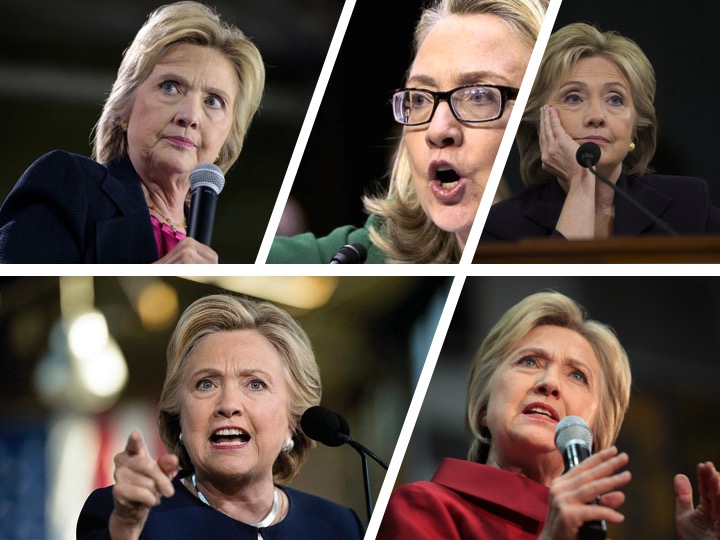
Clinton’s Righteous Indignation
This brings us to the Type 1 emotional driver: anger or wrath. The ‘anger against anger’ 1s unconsciously use to promote poise and self-control makes for a great deal of anger in the air. Many 1s strive very hard not to show it since, after all, anger is so . . . uncivilized. 1s use the defense mechanism of reaction-formation to generate the opposite reaction of whatever natural, but unacceptable, impulse arises. 1s can be seen gritting and tightly smiling or politely laughing when really upset, for example. The pushing down of anger is itself anger, however, as is much of the Type 1’s criticism, perfectionism, and self-improvement.
1s do show their anger explicitly at times. The University of Virginia’s Miller Center, which has an official partnership with Bill Clinton’s presidential library, released interviews with staff conducted in the mid-2000s. MSNBC reportedformer White House Chief of Staff Leon Panetta saying: “Both Clintons’ temper emerge as a theme in several interviews, but Hillary Clinton’s “had much more sustained velocity, for a longer period of time.”
In the CNN interview referenced earlier, biographer Carl Bernstein said:
[Hillary Clinton] is very conservative in her own beliefs about personal things. About fidelity. About loyalty, and family. Yet she seems almost incapable of introspection. And this, of course, gets to the question about the anger she carries, which so many friends and associates discussed with me as an essential component of understanding her. You can’t get beyond the thread of anger in her life.
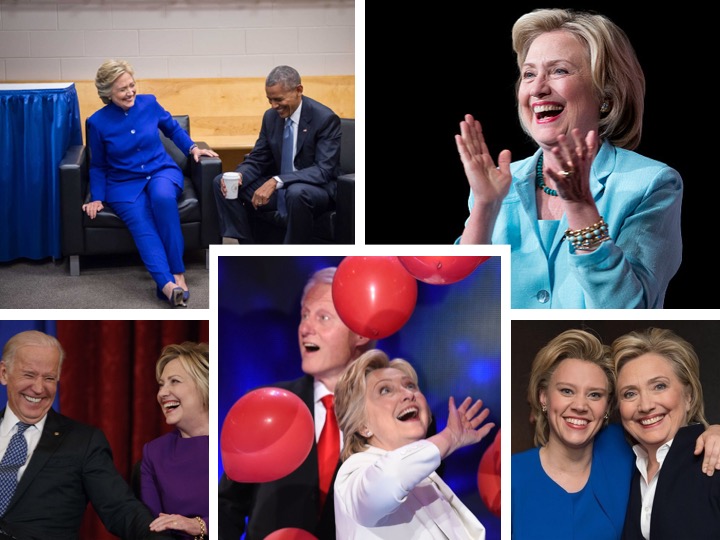
Clinton’s Calm Joy & Good Humor
The journey for the Type 1 is from anger to serenity — abiding in calm joy. Serenity is that deeply peaceful yet exhilarating feeling of everything flowing just right, just perfectly. Highly integrated 1s tune into serenity more frequently, not matter how “imperfect” things seem on life’s surface. Bernstein continues:
[Hillary Clinton is not] the happy warrior that Bill Clinton is. However, in private with her friends, she is fun, girlish, and mischievous and shows no difficulty letting her hair down. One other aspect: She is a great and caring friend, and the stories are legion about notes she has written (with no possible ulterior or political motive) to friends and strangers about their trials and tribulations and triumphs.
That Clinton is “fun, girlish, and mischievous” in private is not surprising. When healthier, 1s embody the freedom and spontaneity of Type 7; indeed, integrated 1s are often funnier than the characteristically funny 7s. Her friends confirm this side of Clinton, with one saying she’s “warm, funny and caring” in private. Another said:
I’ve been in a couple of situations where people have met Hillary for the first time, and without exception, they like her. They have only seen what they’ve seen on the media. And then they spend a little time with her. They find the real person. They notice that warmth right away, that personal connection.
No doubt the Clinton Campaign is trying to show more of this side of their candidate. The election may just turn on whether technocratic dishonesty and barely concealed disdain or warm humor and serenely righteous anger dominate Clinton’s temperament — in actuality and in public. No pressure, though.
* * * * * * * * *
Click here to learn more about the Living Enneagram approach of relating the nine personality types to the nine universal stages of transformation.
* * * * * * * * *
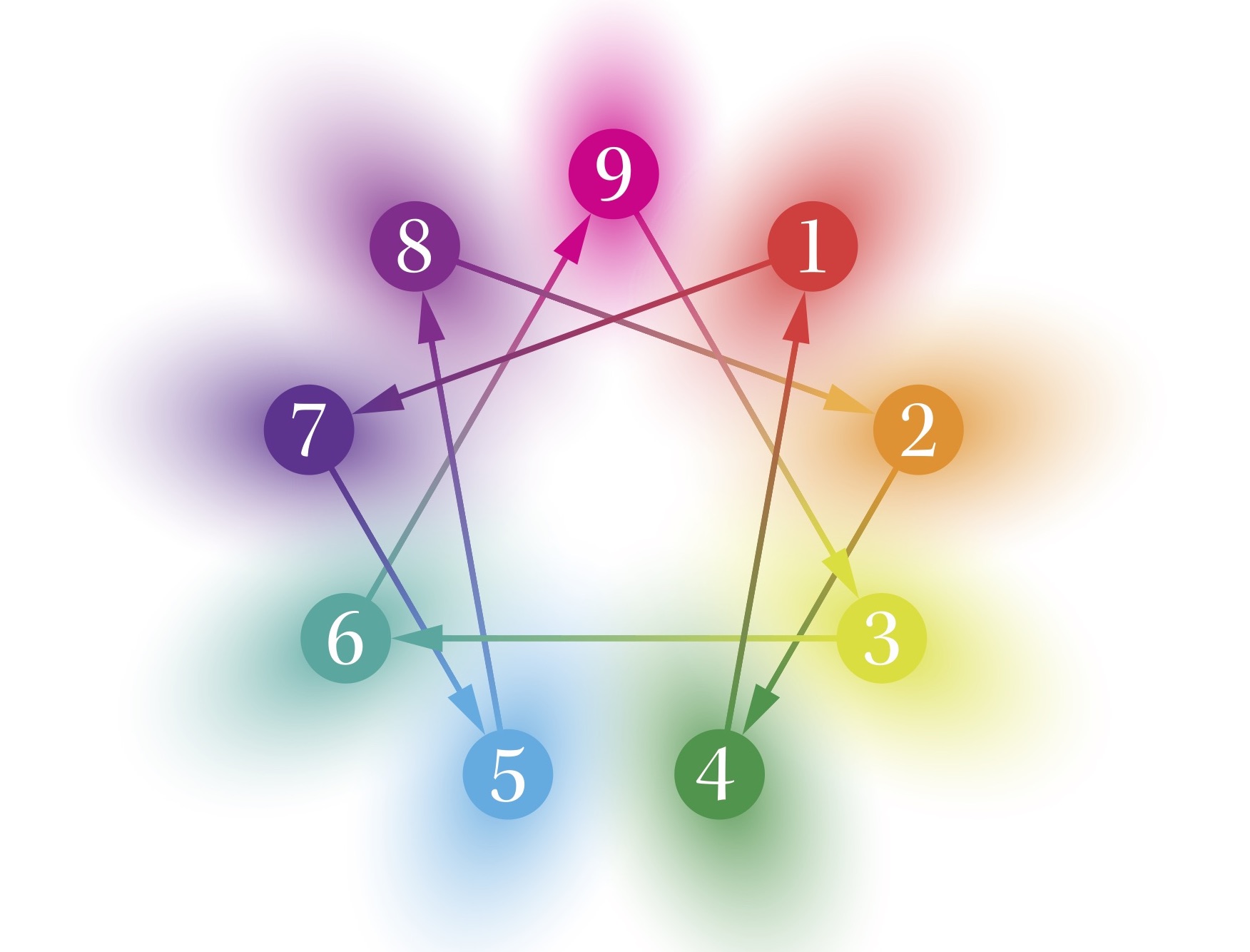
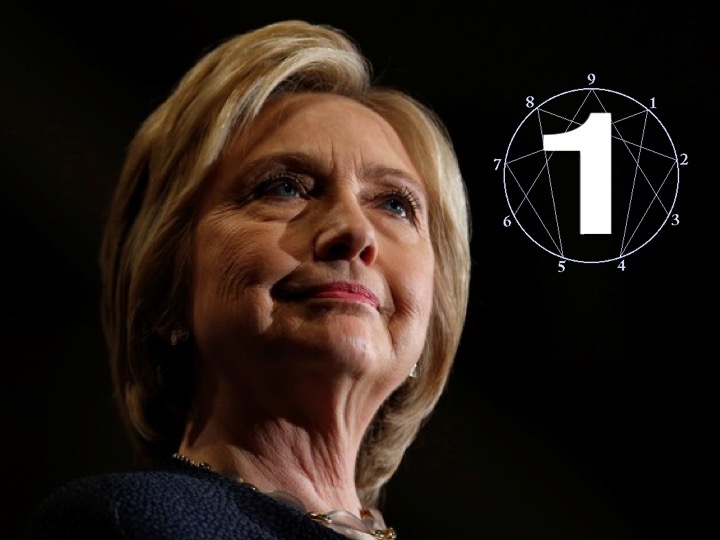
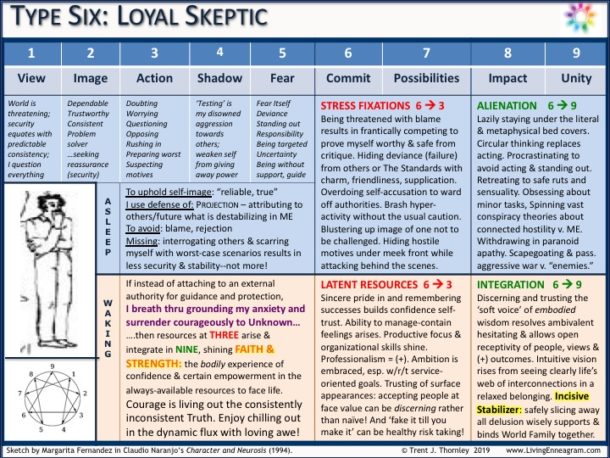

Recent Comments